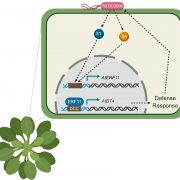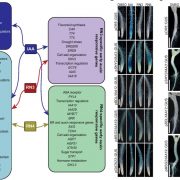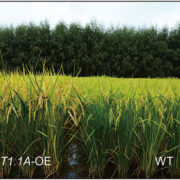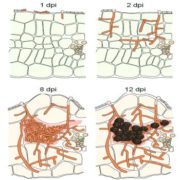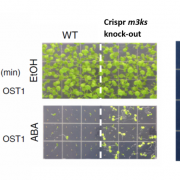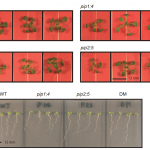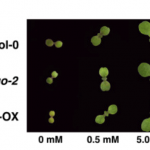Symplastic auxin transport: Active, passive or both? (Curr. Biol.)
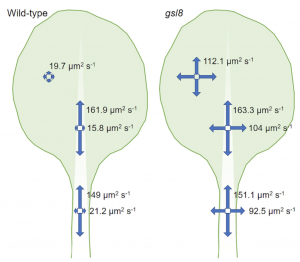 Adjacent cells in plants are connected by cytoplasmic connections called plasmodesmata (PD) and the movement through PD is called symplastic movement. Studies have shown that auxin transport between cells is protein-dependent, but it is not clear whether it can also move freely in the symplastic pathway. In this report Gao et al. show evidence for PD-mediated auxin diffusion using microscopy and mathematical modelling. Using a fluorescent tracer, the authors showed that in the epidermal cells of the leaf midrib and petiole there is more diffusion in the longitudinal compared to the transverse direction. Callose deposited in the PD neck is more abundant in the longitudinal walls compared to the transverse walls, creating a channeling effect in the longitudinal direction. This observation was supported by analysis of the mutant of GSL8 (GLUCAN SYNTHASE LIKE 8) which is deficient in callose synthesis. The authors show evidence for passive auxin movement through PD in specific epidermal cells, suggesting that auxin transport is both active and passive. Further research is needed to see how these two are coordinated. (Summary by Vijaya Batthula @Vijaya_Batthula) Curr. Biol. 10.1016/j.cub.2020.03.014
Adjacent cells in plants are connected by cytoplasmic connections called plasmodesmata (PD) and the movement through PD is called symplastic movement. Studies have shown that auxin transport between cells is protein-dependent, but it is not clear whether it can also move freely in the symplastic pathway. In this report Gao et al. show evidence for PD-mediated auxin diffusion using microscopy and mathematical modelling. Using a fluorescent tracer, the authors showed that in the epidermal cells of the leaf midrib and petiole there is more diffusion in the longitudinal compared to the transverse direction. Callose deposited in the PD neck is more abundant in the longitudinal walls compared to the transverse walls, creating a channeling effect in the longitudinal direction. This observation was supported by analysis of the mutant of GSL8 (GLUCAN SYNTHASE LIKE 8) which is deficient in callose synthesis. The authors show evidence for passive auxin movement through PD in specific epidermal cells, suggesting that auxin transport is both active and passive. Further research is needed to see how these two are coordinated. (Summary by Vijaya Batthula @Vijaya_Batthula) Curr. Biol. 10.1016/j.cub.2020.03.014
[altmetric doi=”10.1016/j.cub.2020.03.014″ details=”right” float=”right”]


